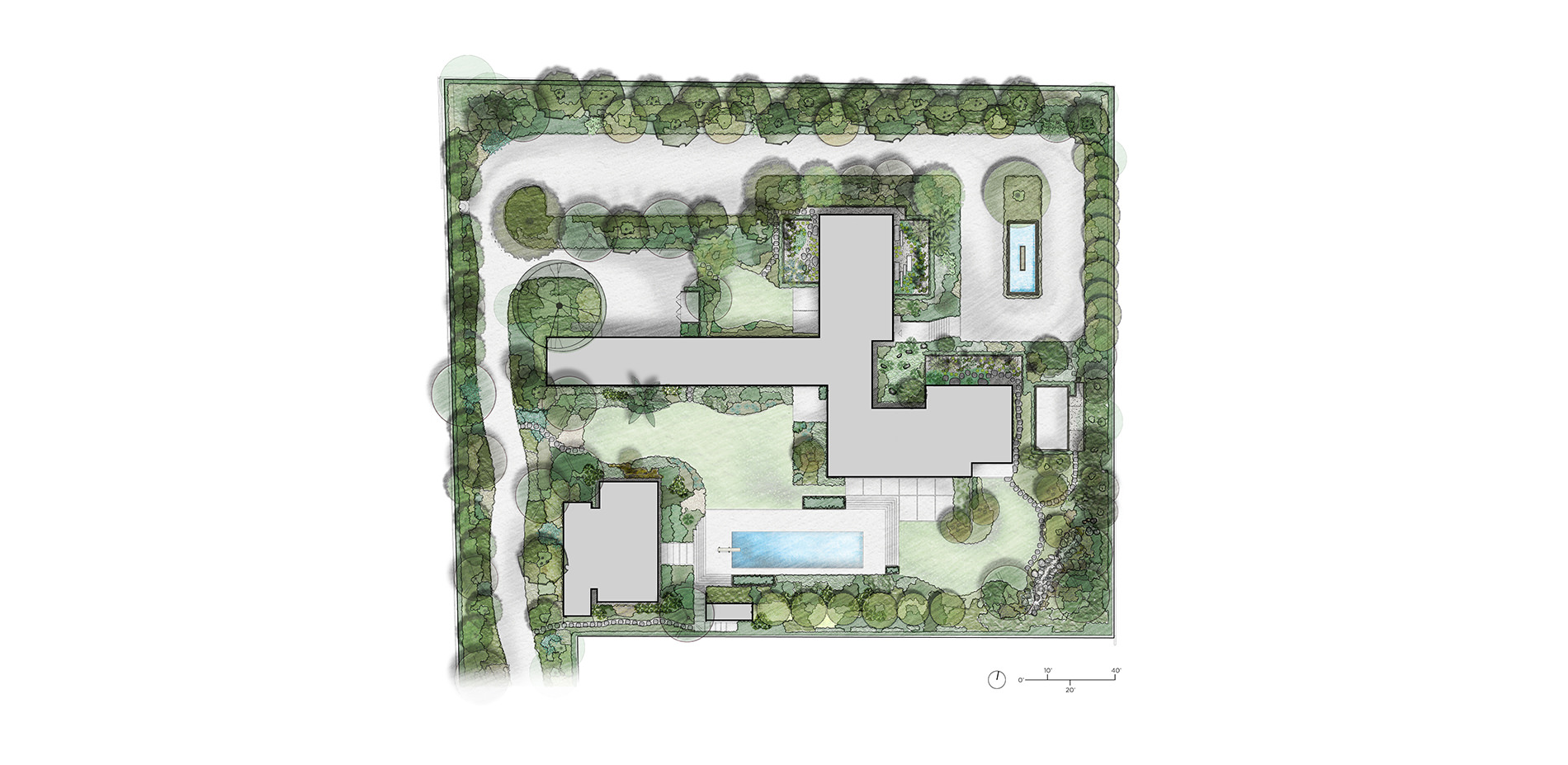
Site plan
Photo Credit: Marmol Radziner
Images for this project are not available for reproduction
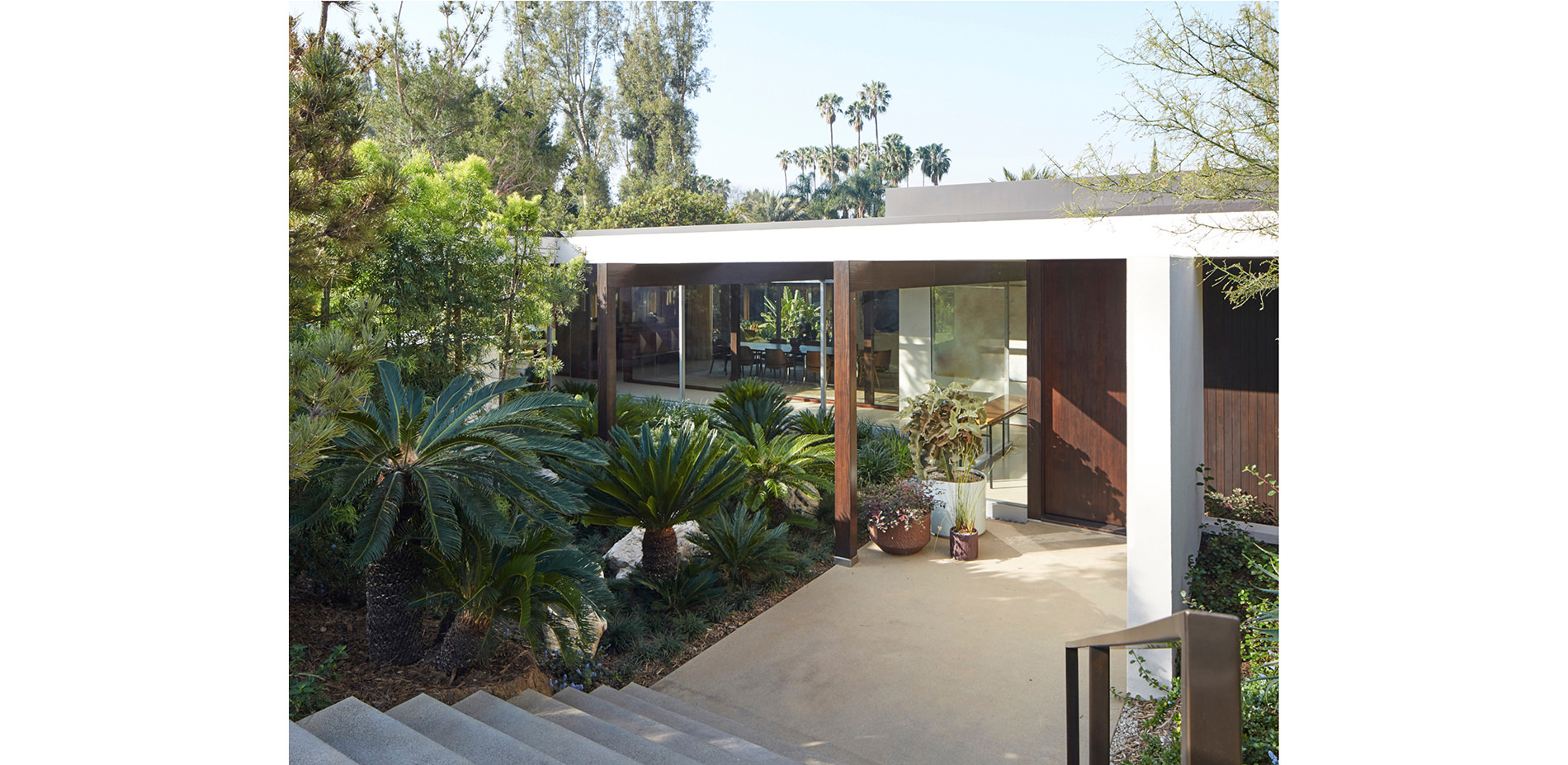
Main entrance and central garden space
Photo Credit: Roger Davies
Images for this project are not available for reproduction

The view into the central garden shows how the signature spider leg post-and-beam supports connect the architecture to the landscape.
Photo Credit: Roger Davies
Images for this project are not available for reproduction

The interior entry foyer and central garden, as photographed by Julius Shulman circa 1955 (top left); before restoration in 2011 (bottom left); and after restoration in 2015 (right).
Photo Credit: Julius Shulman (top left image), Marmol Radziner (bottom left image), Manolo Langis (right image)
Images for this project are not available for reproduction

The south patio and swimming pool, as photographed by Julius Shulman circa 1955 (top left); before restoration in 2011 (top right); and after restoration in 2015 (bottom). The terraced patio and sloping lawn were recreated; specimen trees were placed to match the original design.
Photo Credit: Julius Shulman (top left image), Marmol Radziner (top right image), Roger Davies (bottom image)
Images for this project are not available for reproduction
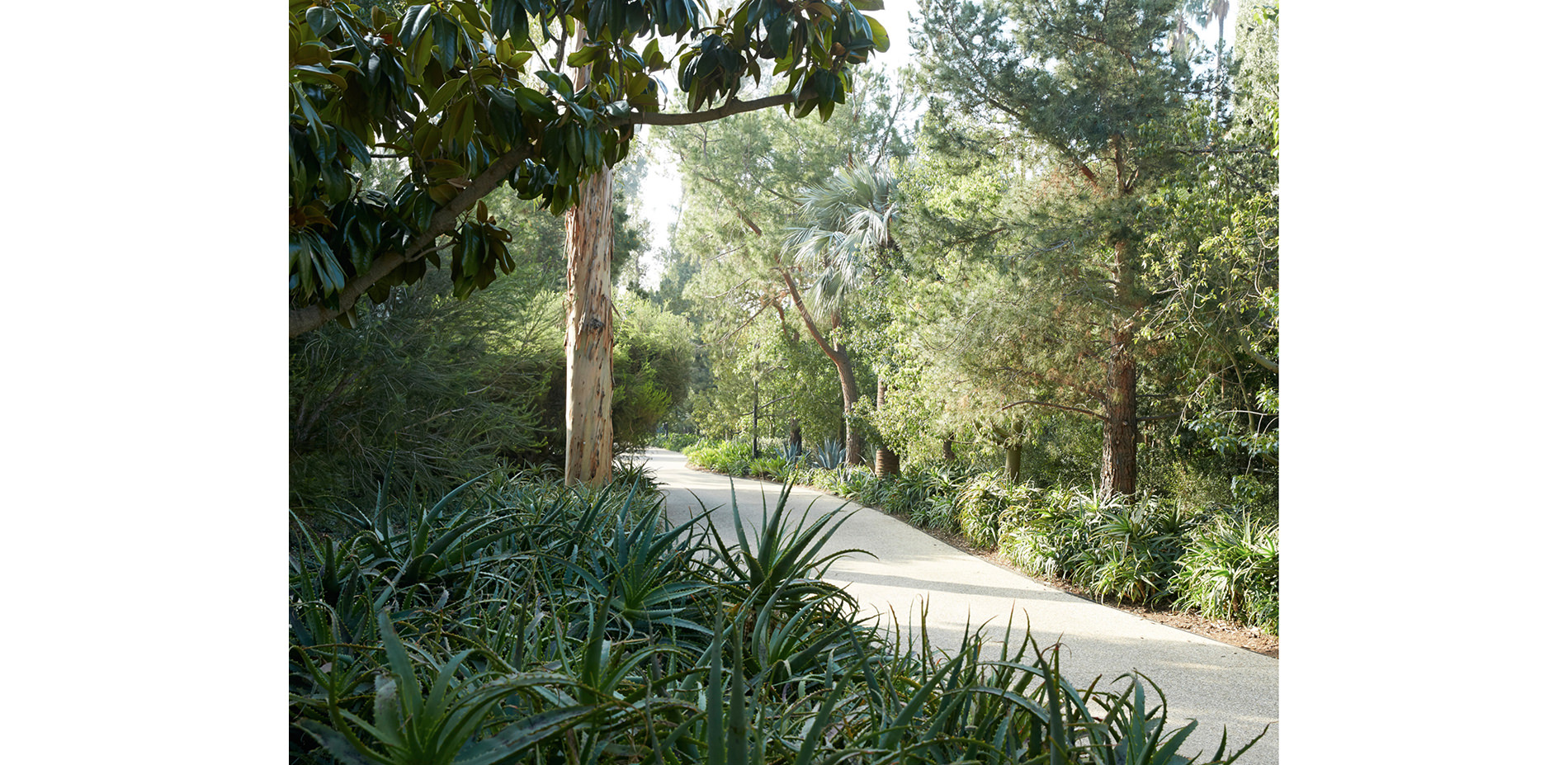
Over a hundred mature trees line the long, winding driveway. The new specimens, paired with the lush underplantings, provide unparalleled levels of privacy from adjacent Sunset Boulevard.
Photo Credit: Roger Davies
Images for this project are not available for reproduction

The garage façade’s illuminated glass panels silhouette sculptural plantings.
Photo Credit: Roger Davies
Images for this project are not available for reproduction

A subtropical plant palette surrounds the main lawn and guest house, where sunny conditions allow the plants to thrive.
Photo Credit: Roger Davies
Images for this project are not available for reproduction
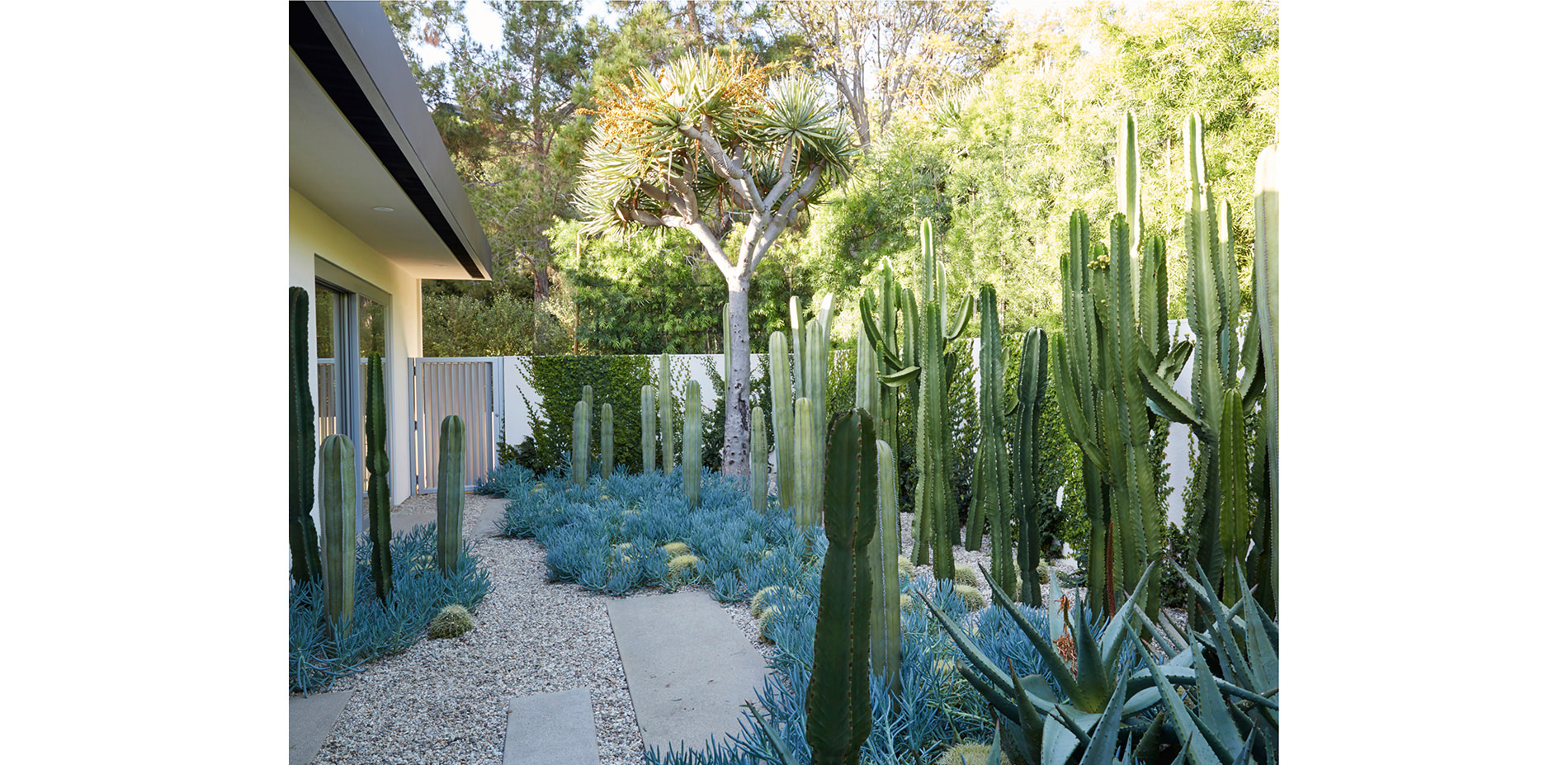
The east guest suite courtyard showcases a desert plant palette that weaves together layers and varying heights of bold forms and colors.
Photo Credit: Roger Davies
Images for this project are not available for reproduction

Light, layered masses of texture-rich foliage blanket the master bathroom courtyard.
Photo Credit: Roger Davies
Images for this project are not available for reproduction

A shade garden of lush plantings alongside a trickling creek bed create a cool microclimate southeast of the master suite.
Photo Credit: Roger Davies
Images for this project are not available for reproduction
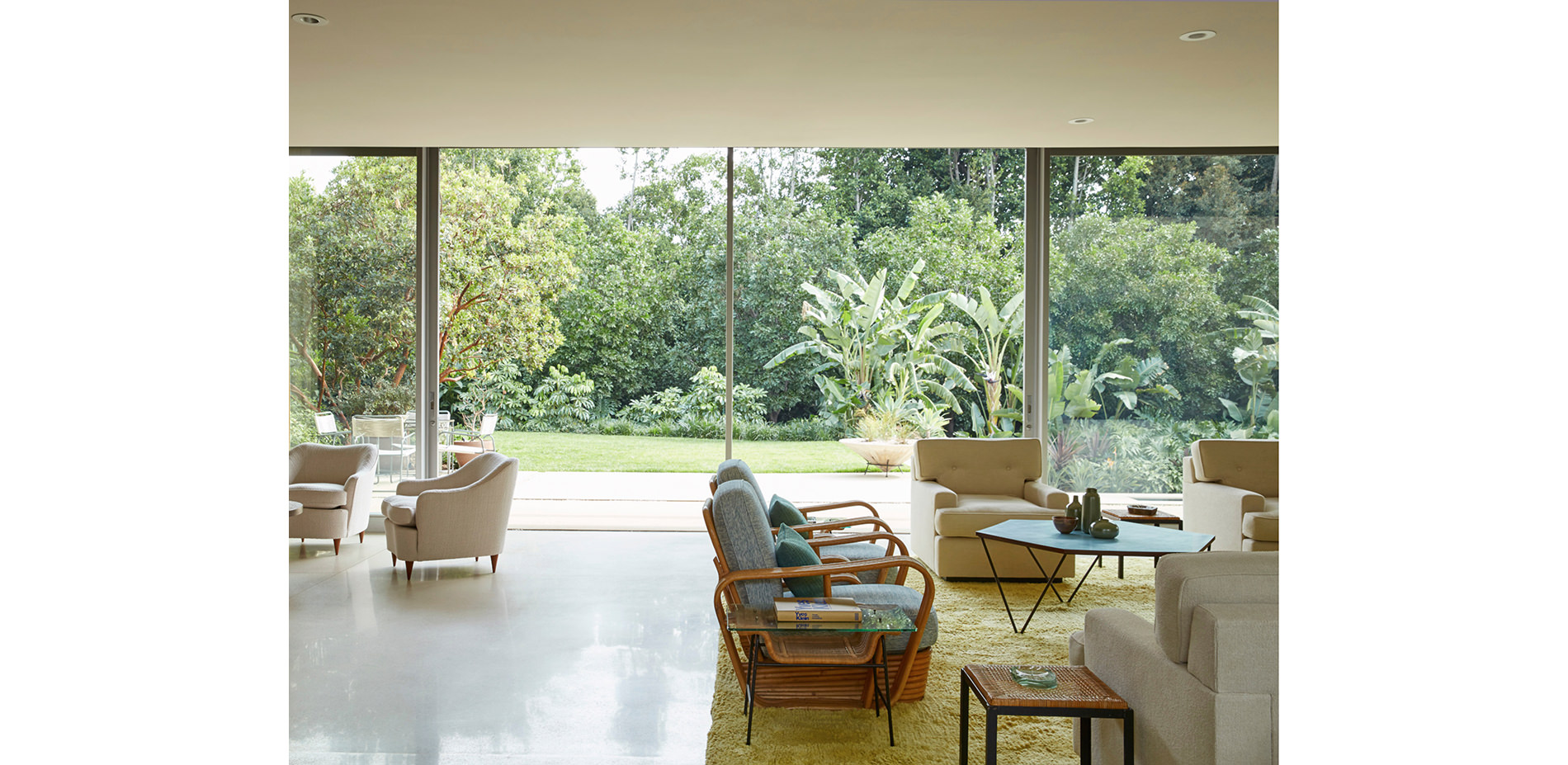
Sliding glass windows demonstrate the indoor-outdoor sensibility of the original design. The restoration of the main lawn and pool deck to their original locations strengthens this connection.
Photo Credit: Roger Davies
Images for this project are not available for reproduction
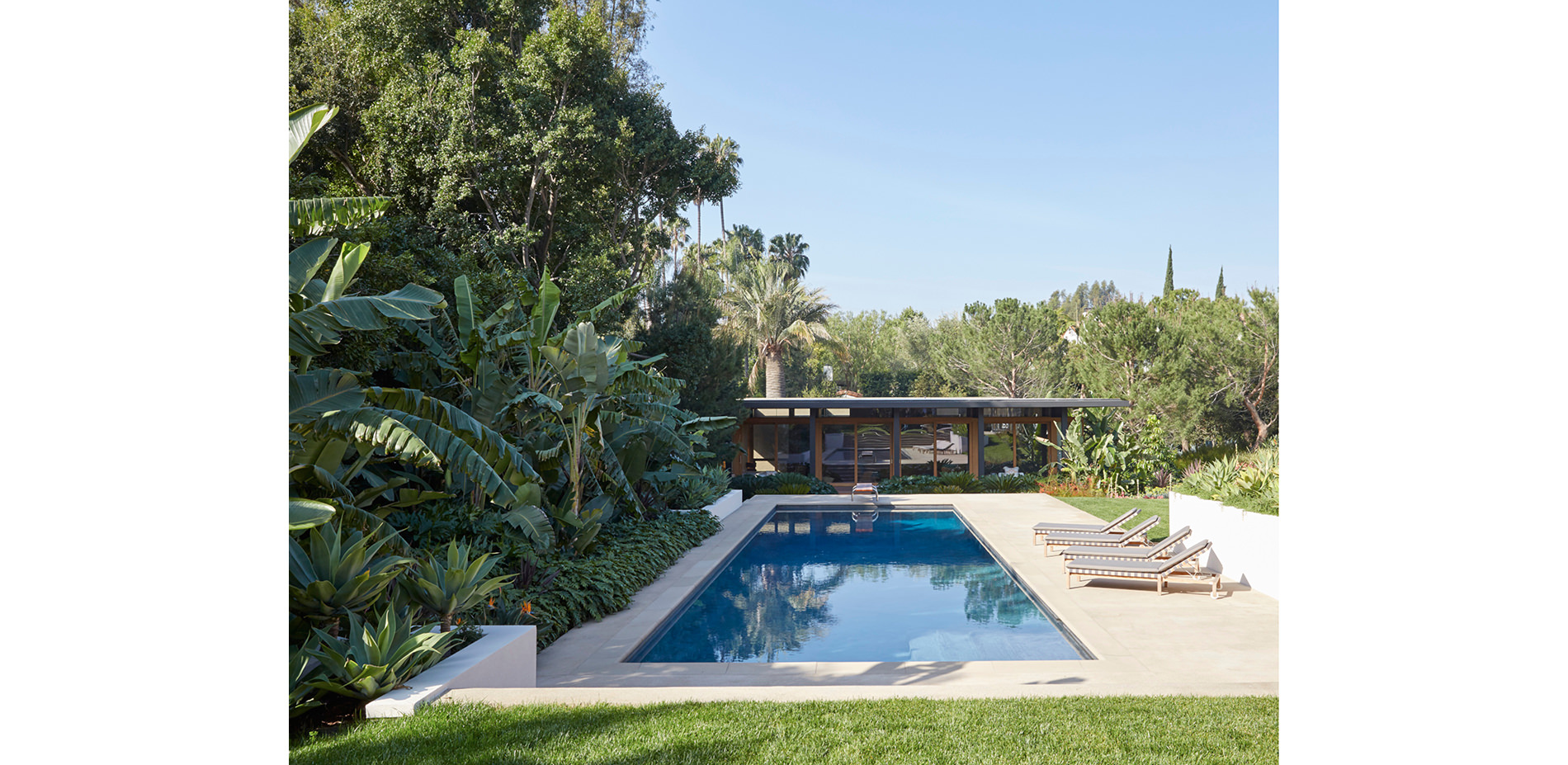
The recreated swimming pool with the new guest house located at the western axis
Photo Credit: Roger Davies
Images for this project are not available for reproduction
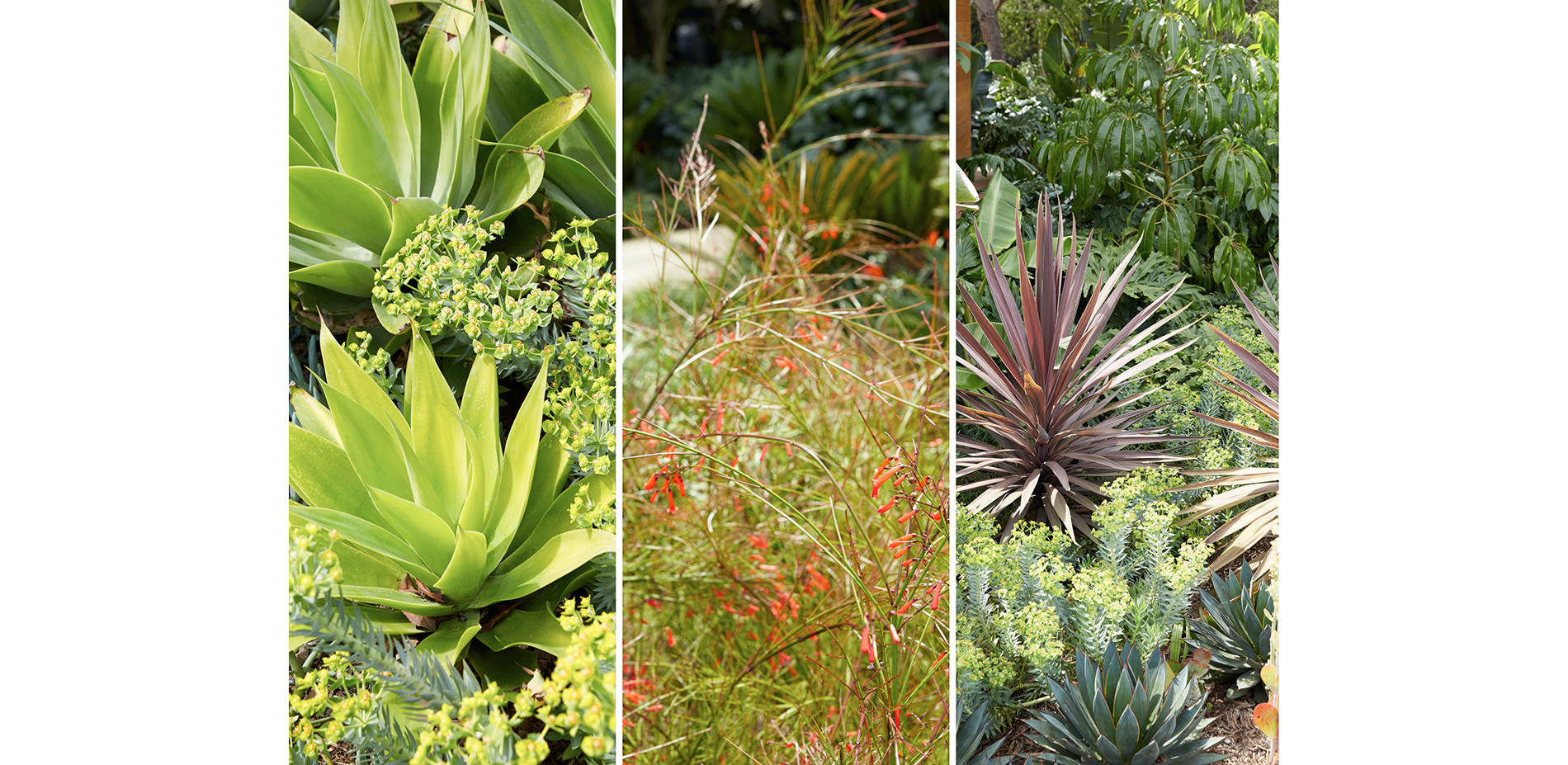
A sampling of the different Mediterranean plant combinations found throughout the garden
Photo Credit: Roger Davies
Images for this project are not available for reproduction
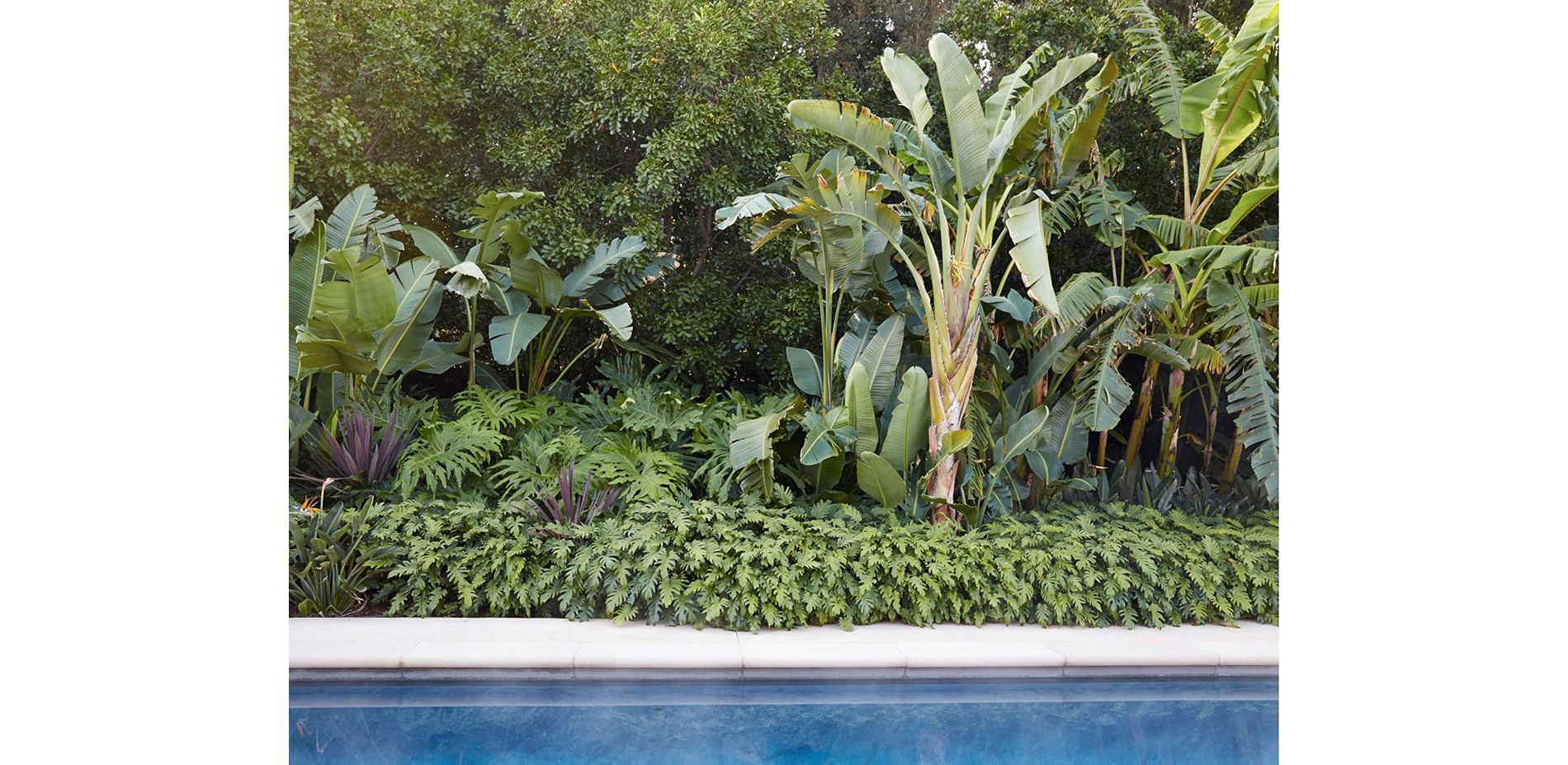
Large-leafed tropical plantings frame the pool and create a lush privacy buffer.
Photo Credit: Roger Davies
Images for this project are not available for reproduction


















